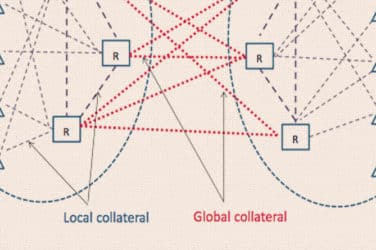The European Supervisory Authorities (EBA, EIOPA and ESMA – ESAs), in response to the COVID-19 outbreak have published joint draft Regulatory Technical Standards (RTS) to amend the Delegated Regulation on the risk mitigation techniques for non-centrally cleared OTC derivatives (bilateral margining), under the European Markets Infrastructure Regulation (EMIR), to incorporate a one-year deferral of the two implementation phases of the bilateral margining requirements.
?ESAs (@EBA_News @eiopa_europa_eu & ESMA) publish Joint RTS amending the bilateral margin requirements under #EMIR in response to #COVIDー19 outbreak
ℹ️Incorporates 1 year deferral of the two implementation phases on bilateral margining requirements.
?https://t.co/OnkEa0PrRA pic.twitter.com/2hCTv0jgbe
— ESMA – EU Securities Markets Regulator ?? (@ESMAComms) May 4, 2020
The ESAs have intensified their coordination with national competent authorities (NCAs), as well as with relevant authorities from other jurisdictions in order to ensure adequate regulatory actions where needed during this crisis. In this context, these amending draft RTS were developed to facilitate further an internationally coordinated approach on how to adapt the implementation of the bilateral margin requirements.
The Basel Committee on Banking Supervision (BCBS) and the International Organisation of Securities Commissions (IOSCO) announced on 3 April heir agreement to defer by one year, the deadline for completing the final two implementation phases of the bilateral margin requirements, in order to provide additional operational capacity for counterparties to respond to the immediate impact of COVID-19. The ESAs draft RTS present the changes to the Delegated Regulation on bilateral margining to incorporate in the EU regulatory framework the one-year deferral agreed by the BCBS and IOSCO.
These changes would result in covered counterparties with an aggregate average notional amount of non-centrally cleared derivatives above €50 billion becoming subject to the requirement to exchange initial margin from 1 September 2021, while covered counterparties with an aggregate average notional amount of non-centrally cleared derivatives above €8 billion becoming subject to the requirement from 1 September 2022.
Legal basis and next steps
The ESAs have developed the RTS under Article 11(15) of Regulation (EU) No 648/2012 of the European Parliament and Council on OTC derivatives, central counterparties and trade repositories (EMIR).
A first version (ESAs 2019 20) of these draft RTS had been submitted to the Commission and published on the websites of the ESAs on 5 December 2019. This first version dealt with the treatment of physically settled FX forward and swap contracts, intragroup contracts, equity option contracts and the implementation of the initial margin requirements. However, in response to the Covid-19 outbreak, the Final Report and the draft RTS have now been updated to take into account the agreement from the BCBS and IOSCO to defer by one year the deadline for completing the final two implementation phases of the bilateral margin requirements. This updated version of the Final Report on the draft RTS on bilateral margining thus replaces entirely the version submitted to the Commission in December 2019.
The ESAs have now submitted this second version of the draft RTS to the Commission for endorsement in the form of a Commission Delegated Regulation, i.e. a legally binding instrument applicable in all Member States of the European Union. Following the endorsement, they are then subject to non-objection by the European Parliament and the Council.
Source: Esma





